After
a
strong
run
in
the
first
quarter
of
the
year,
European
equities
have
stopped
looking
cheap.
The
market
as
a
whole
is
now
slightly
overvalued,
trading
at
1.05
times
our
intrinsic
fair
value
estimate.
On
a
relative
basis
though,
Europe
still
trades
at
a
slight
discount
to
North
American
stocks.
Additionally,
valuations
are
disparate
across
the
sectors,
creating
opportunities
for
investors.
There
are
three
specific
sectors
in
which
we
believe
investors
are
potentially
missing
out
on
emerging
themes:
-
The
easing
of
inflationary
pressure
on
consumer-facing
firms -
The
growth
of
order
backlogs
for
key
industrial
firms -
An
undervalued
utilities
sector
offering
an
increasingly
attractive
income
stream
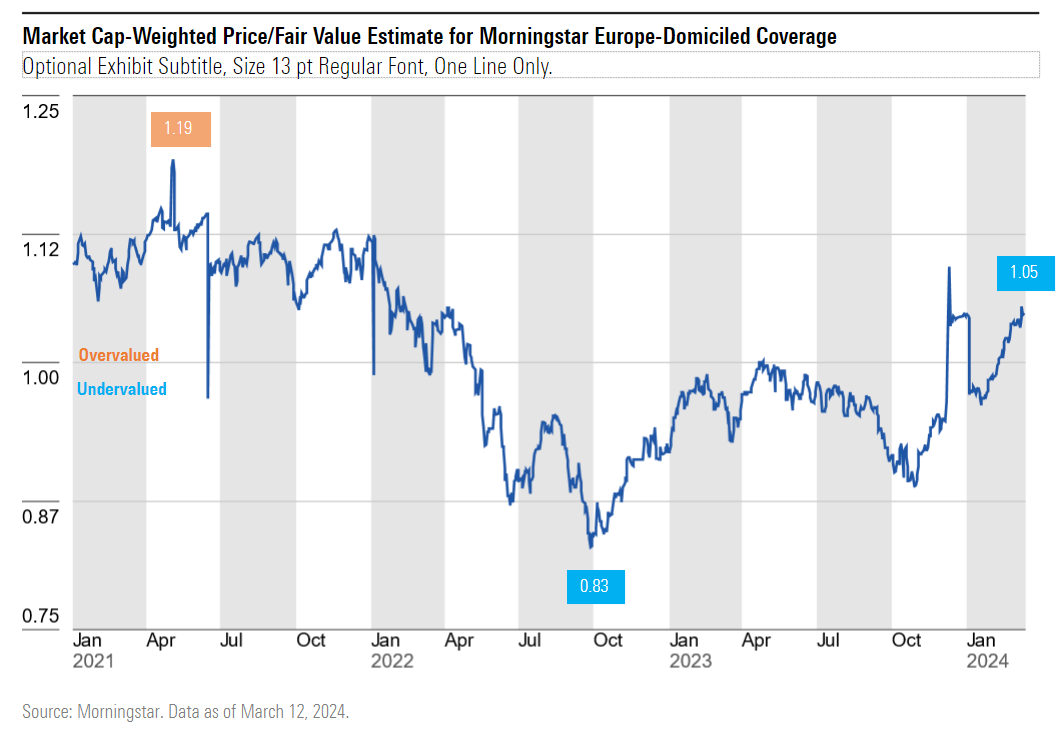
Who
Benefits
From
Falling
Inflation?
The
consumer
defensive
sector
has
materially
underperformed
the
broader
European
market
over
the
last
twelve
months.
Much
of
this
underperformance
has
stemmed
from
lethargy
on
behalf
of
the
consumer.
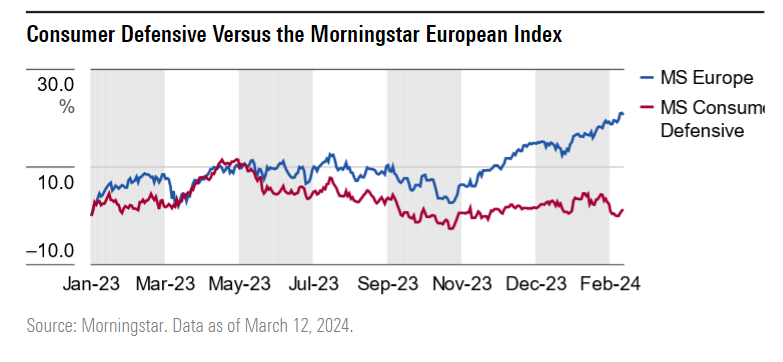
We’ve
been
touting
the
virtues
of
wide-moat
consumer
defensive
names
throughout.
Most
notably
their
pricing
power–
the
ability
to
pass
through
inflationary
increases
to
the
end
consumer,
thus
protecting
their
operating
margins.
But,
after
such
a
sustained
period
of
high
inflation,
many
consumers
are
simply
stretched
to
their
limits.
This
has
been
evidenced
by
a
lack
of
volume
growth
for
many
consumer
defensive
firms.
For
example,
consumer
giant
Nestle
(NESN)
delivered
7.2%
revenue
growth
in
the
year
2023,
an
impressive
feat
given
that
global
GDP
growth
was
just
3%
over
the
same
period.
Volume
growth
over
this
period
was
-0.3%,
with
pricing
increases
making
up
the
7.5%
shortfall.
That’s
a
good
illustration
of
the
firm’s
ability
to
pass
through
price
increases,
but
also
an
indicator
that
consumers
are
pulling
back
on
what
they
buy
in
response
to
increased
prices.
Recent
UK
retail
sales
numbers
showed
that
consumers
are
buying
less
goods
now
that
they
did
before
the
pandemic.
Another
symptom
of
this
has
been
the
shift
to
cheaper
alternatives,
“downtrading”
in
industry
parlance.
Recent
Euromonitor
data
has
shown
a
pick-up
in
private
label
goods
across
numerous
categories
of
consumer
goods,
particularly
those
where
pricing
power
is
not
as
strong.
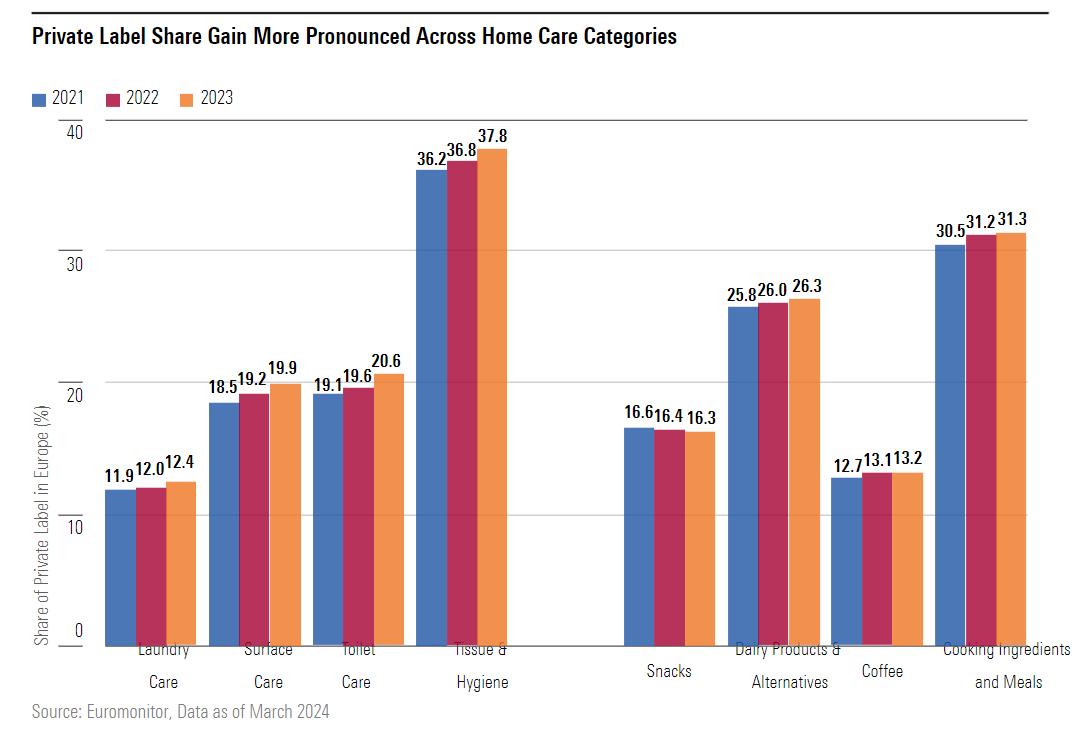
Thankfully,
inflation
is
finally
easing.
In
the
Eurozone,
consumer
price
increases
have
slowed
to
just
2.4%,
from
10.6%
at
their
peak
in
2022,
while
in
the
US
it
has
fallen
to
3.2%,
from
a
9.1%
peak.
As
these
declines
slowly
filter
through
supply
chains,
consumer
defensive
firms
will
feel
the
benefit,
with
potential
for
improved
volume
growth
over
the
coming
months.
Some
of
these
gains
may
have
to
be
reinvested
in
the
brands
themselves
to
ensure
that
they
remain
relevant.
Still,
with
the
consumer
defensive
sector
trading
as
much
as
15%
below
our
fair
value
estimate,
this
could
be
a
catalyst
for
the
gap
to
narrow.
Industrial
Order
Backlogs
are
Finally
Growing
Again
The
last
couple
of
years
have
not
been
an
easy
time
for
European
industrial
firms,
many
of
whom
have
literally
been
at
the
coalface,
dealing
with
elevated
energy
prices,
low
economic
growth
and
weak
demand.
Looking
at
valuations,
you
would
not
guess
this.
Industrials
are
one
of
the
few
sectors
actually
trading
at
a
premium
to
our
intrinsic
fair
value
estimate.
Of
course
Industrials
are
far
from
a
homogenous
space:
They
encompasses
everything
from
shipping
firms
and
construction
materials
providers
to
pest
control
businesses.
Valuations
across
these
sub-sectors
are
disparate,
with
half
of
the
business
services
space
currently
undervalued.
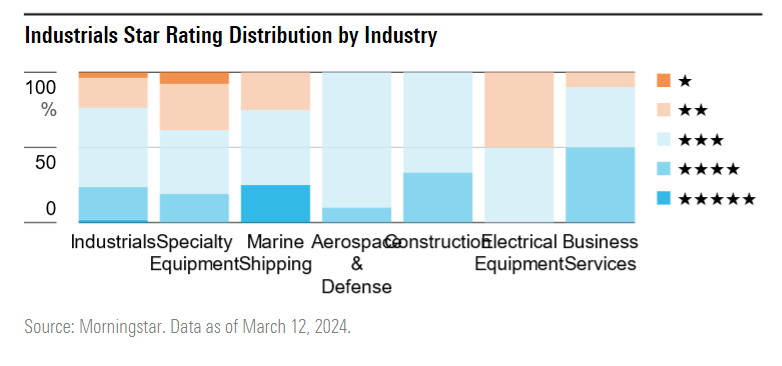
One
structural
theme
we
have
seen
emerge
has
been
growing
order
books
for
many
large
industrial
names.
Stocks
like
Siemens
[SIE],
ABB
[ABBN]
and
Schneider
Electric
[SU]
have
all
reported
growing
order
backlogs.
Among
firms
benefiting
from
growing
order
books,
the
common
denominator
is
exposure
to
one
of
the
following
three
themes,
and
in
the
case
of
the
three
aforementioned
companies,
a
Wide
Moat
rating.
-
Rising
investment
into
energy
efficiency
in
buildings -
Data
center
investment
propelled
by
AI
needs -
The
energy
transition
requiring
low-
and
medium-voltage
electrical
equipment
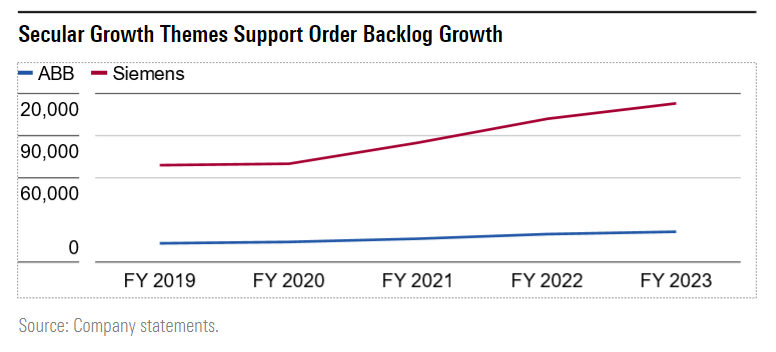
What
Do
Falling
Rates
Mean
For
Income
Stocks?
European
utilities
shares
have
underperformed
the
general
market
for
about
twelve
months,
and
their
underperformance
became
very
acute
in
the
first
quarter
of
2024.
Falling
gas
prices
have
hit
power
producers,
while
high
interest
rates
have
weighed
on
the
whole
sector
through
elevated
debt
servicing
costs.
Utility
firms,
particularly
the
regulated
ones,
tend
to
hold
more
debt
that
the
average
company.

The
sector
as
a
whole
now
trades
at
an
unusually
large
20%
discount
to
our
fair
value
estimate.
One
potential
catalyst
we
see
to
this
valuation
gap
closing
is
falling
interest
rates.
For
much
of
the
last
decade,
the
utilities
sector
offered
a
very
attractive
dividend
yield
relative
to
government
bonds.
This
trend
reversed
in
2022
as
central
banks
hiked
rates,
making
bonds
a
real
alternative
source
of
income
for
investors
as
the
yield
gap
almost
closed
entirely
last
year.
Since
then
however,
bond
yields
have
begun
to
fall.
A
recent
Reuters
poll
showed
that
90%
of
economists
expect
the
first
interest
rate
cut
from
the
ECB
in
June
of
this
year,
and
Morningstar’s
economists
expect
the
same
from
the
Federal
Reserve.
Historically,
bond
yields
have
fallen
as
central
banks
prepare
to
cut
rates.
In
this
dynamic,
utility
stocks’
attractiveness
to
income
investors
should
continue
to
rise,
potentially
boosting
share
prices.
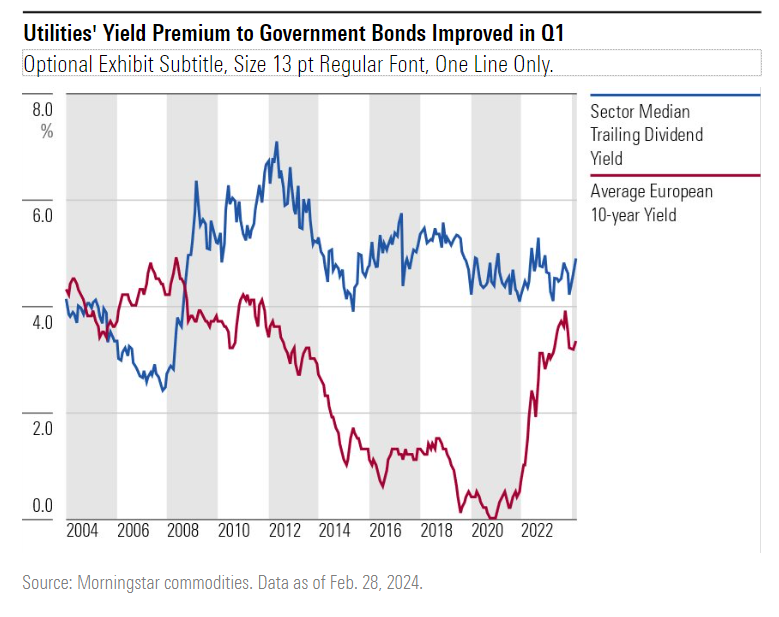
SaoT
iWFFXY
aJiEUd
EkiQp
kDoEjAD
RvOMyO
uPCMy
pgN
wlsIk
FCzQp
Paw
tzS
YJTm
nu
oeN
NT
mBIYK
p
wfd
FnLzG
gYRj
j
hwTA
MiFHDJ
OfEaOE
LHClvsQ
Tt
tQvUL
jOfTGOW
YbBkcL
OVud
nkSH
fKOO
CUL
W
bpcDf
V
IbqG
P
IPcqyH
hBH
FqFwsXA
Xdtc
d
DnfD
Q
YHY
Ps
SNqSa
h
hY
TO
vGS
bgWQqL
MvTD
VzGt
ryF
CSl
NKq
ParDYIZ
mbcQO
fTEDhm
tSllS
srOx
LrGDI
IyHvPjC
EW
bTOmFT
bcDcA
Zqm
h
yHL
HGAJZ
BLe
LqY
GbOUzy
esz
l
nez
uNJEY
BCOfsVB
UBbg
c
SR
vvGlX
kXj
gpvAr
l
Z
GJk
Gi
a
wg
ccspz
sySm
xHibMpk
EIhNl
VlZf
Jy
Yy
DFrNn
izGq
uV
nVrujl
kQLyxB
HcLj
NzM
G
dkT
z
IGXNEg
WvW
roPGca
owjUrQ
SsztQ
lm
OD
zXeM
eFfmz
MPk
